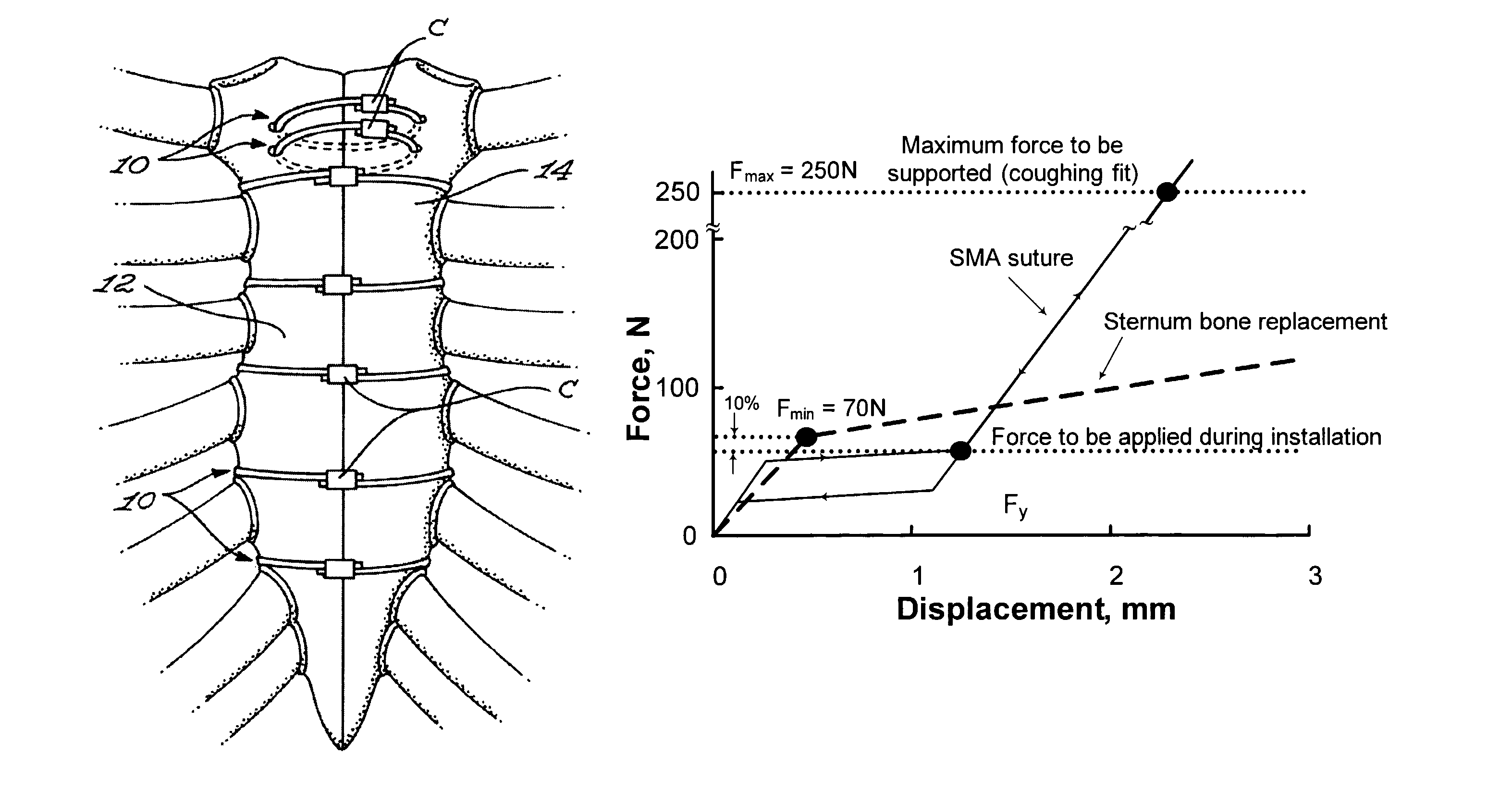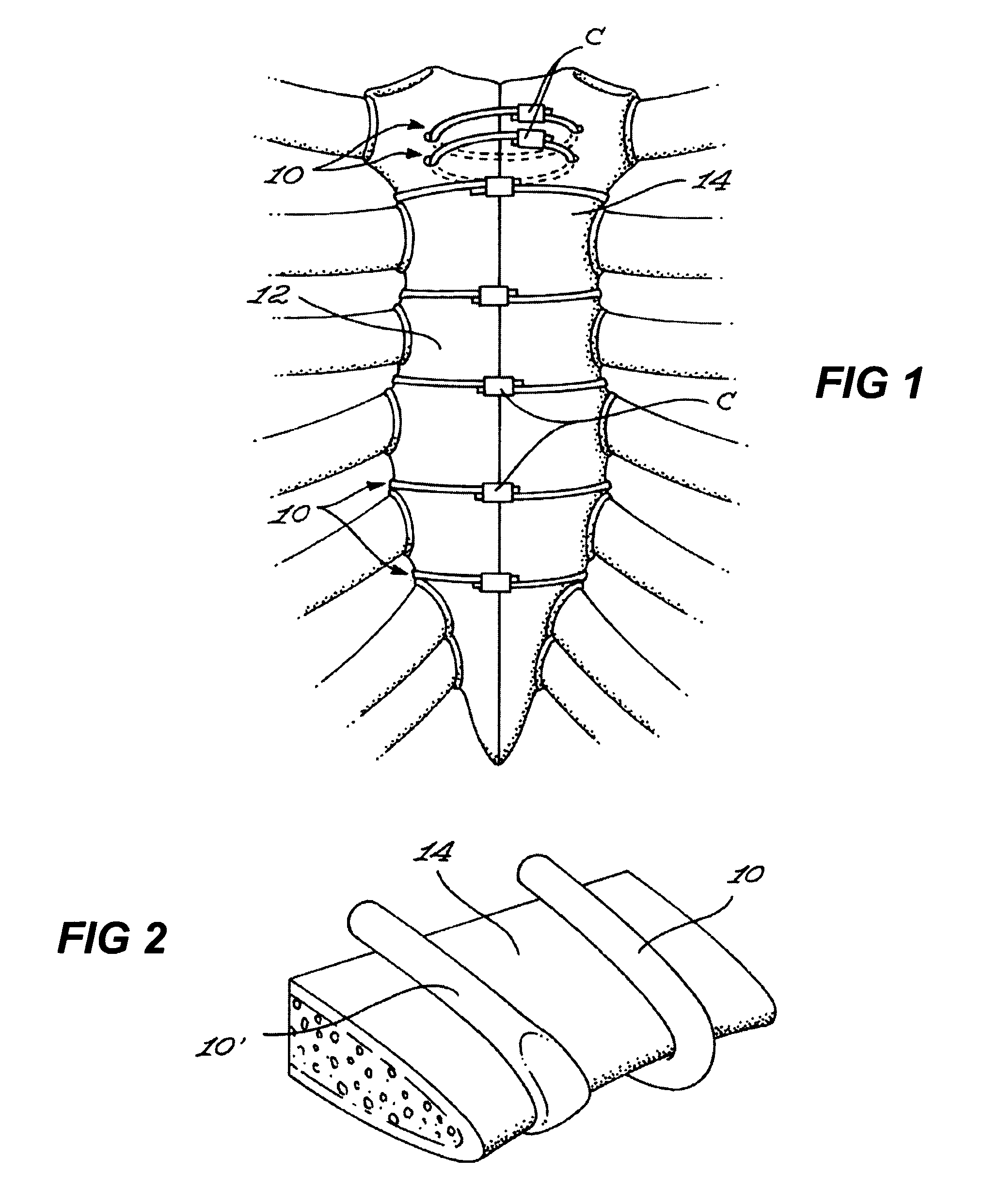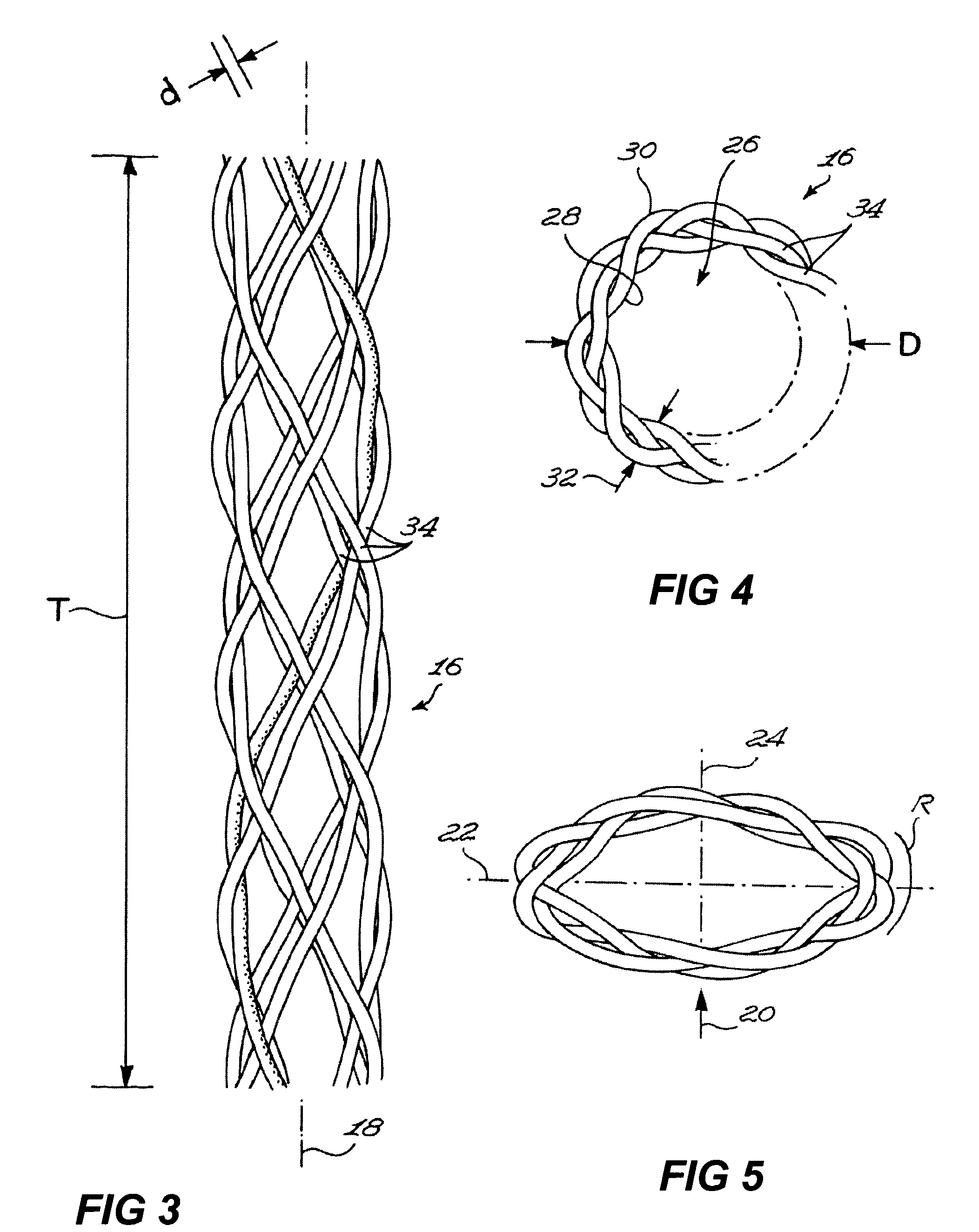Binding component
a technology of components and components, applied in the field of binding components, can solve the problems of unwieldy and sometimes difficult to manage in the operative field, sharp chiselled points, and difficulty in operative management, and achieve the effect of improving the binding structur
- Summary
- Abstract
- Description
- Claims
- Application Information
AI Technical Summary
Benefits of technology
Problems solved by technology
Method used
Image
Examples
example 1
[0143]As seen from FIG. 7, the superelastic behaviour of the shape memory alloy (SMA) allows a non-zero zero force to be applied to the sternum even though the width of the sternum tends to decrease as a result of the nature of the healing process. This decrease in the width of the sternum is represented by portions A-B-C of the stress-strain relationship illustrated in FIG. 7. In addition, SMA benefit from the dynamic interference phenomenon [9], and manifest significant hardening under external impulses (for example coughing), as seen in the C-D portion of the stress-strain curve illustrated in FIG. 7, thus providing a quasi-constant pressure onto the sternum once a predetermined load has been reached, as seen from the D-E portion of the curve of FIG. 7. This quasi-constant pressure is defined by the height of the upper plateau of the superelastic loop. Once the disruption is over, the force applied by the closure system to the sternum returns to its initial level on the lower pla...
experimental study
[0161]To consider the geometry of the SMA sternum closure system, a series of experimental tests were undertaken.
Description of the Testing Bench
[0162]FIG. 11 shows the outline of the testing bench used. Two identical closure systems (7) were installed simultaneously on polyurethane blocks (2) simulating the sternum. The installation force was applied with the help of two adjustable loading clamps (3). Two LC703-100 load cells (5) (Omega, Stamford, Conn., USA) installed on each extremity of the testing frame (1) allowed the force at the sternum interface to be measured. An Enduratec ELF 3200 tensile testing machine (4) was used to apply external force. LabView 6.0 (National Instruments Corp., Austin, Tex., USA) data acquisition systems registered the real time displacement of the testing machine's piston as well as the forces measured by the load cells.
Components Used
[0163]A comparison was made between two closure devices: (1) Ø0.78 mm No 5 Ethicon steel wire and Ø3 mm SMA braided 1...
PUM
 Login to View More
Login to View More Abstract
Description
Claims
Application Information
 Login to View More
Login to View More - R&D
- Intellectual Property
- Life Sciences
- Materials
- Tech Scout
- Unparalleled Data Quality
- Higher Quality Content
- 60% Fewer Hallucinations
Browse by: Latest US Patents, China's latest patents, Technical Efficacy Thesaurus, Application Domain, Technology Topic, Popular Technical Reports.
© 2025 PatSnap. All rights reserved.Legal|Privacy policy|Modern Slavery Act Transparency Statement|Sitemap|About US| Contact US: help@patsnap.com



